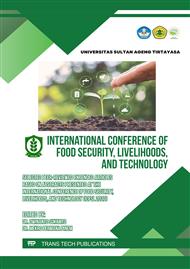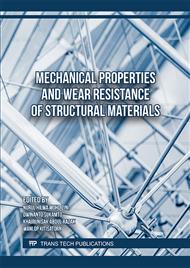p.63
p.71
p.79
p.89
p.95
p.103
p.109
p.115
p.125
Utilization of Steel Slag Waste as Construction Materials of Rigid Pavements
Abstract:
Roads play an important role in realizing the development and distribution of development results in certain areas. Pavement performance shows a decreased durability over time-related to how long the pavement construction can carry out its functions without experiencing fatal damage. This study aims to identify the effect of using steel slag as a substitute for filler with steel slag content of 0%, 1%, 2%, and 3% on concrete compressive and flexural strength values. This study used an experimental method by conducting experiments for testing the compressive and flexural strength of concrete specimens. The results showed that the use of steel slag as a substitute for filler obtained the average compressive strength value of MPa, 21.87 MPa, 22.17 MPa, and 28.47 MPa in concrete aged 28 days with steel slag content of 0%, 1%, 2% and 3% 25.07 respectively. The average flexural strength of concrete aged 28 days with steel slag content of 0%, 1%, 2% and 3% were 3.84 MPa, 2.83 MPa, 3.41 MPa, and 4.09 MPa respectively. The composition of 3% steel slag was the optimal composition as a filler replacement material. The pozzolanic properties of steel slag could increase the durability and density of the concrete specimen, but it required a long curing time and the increase in the initial strength of concrete slows down.
Info:
Periodical:
Pages:
103-108
Citation:
Online since:
October 2023
Keywords:
Price:
Сopyright:
© 2023 Trans Tech Publications Ltd. All Rights Reserved
Share:
Citation:



